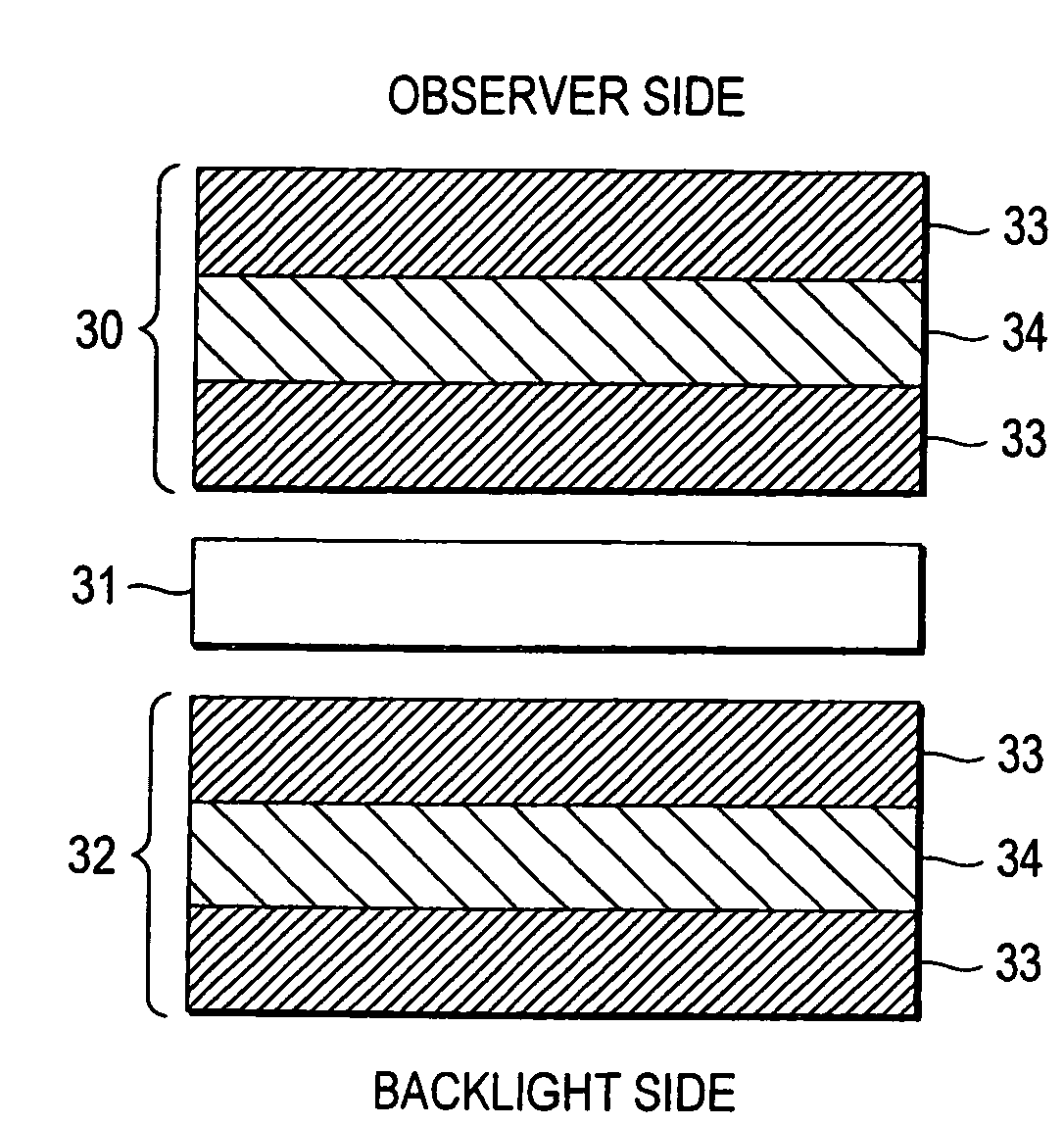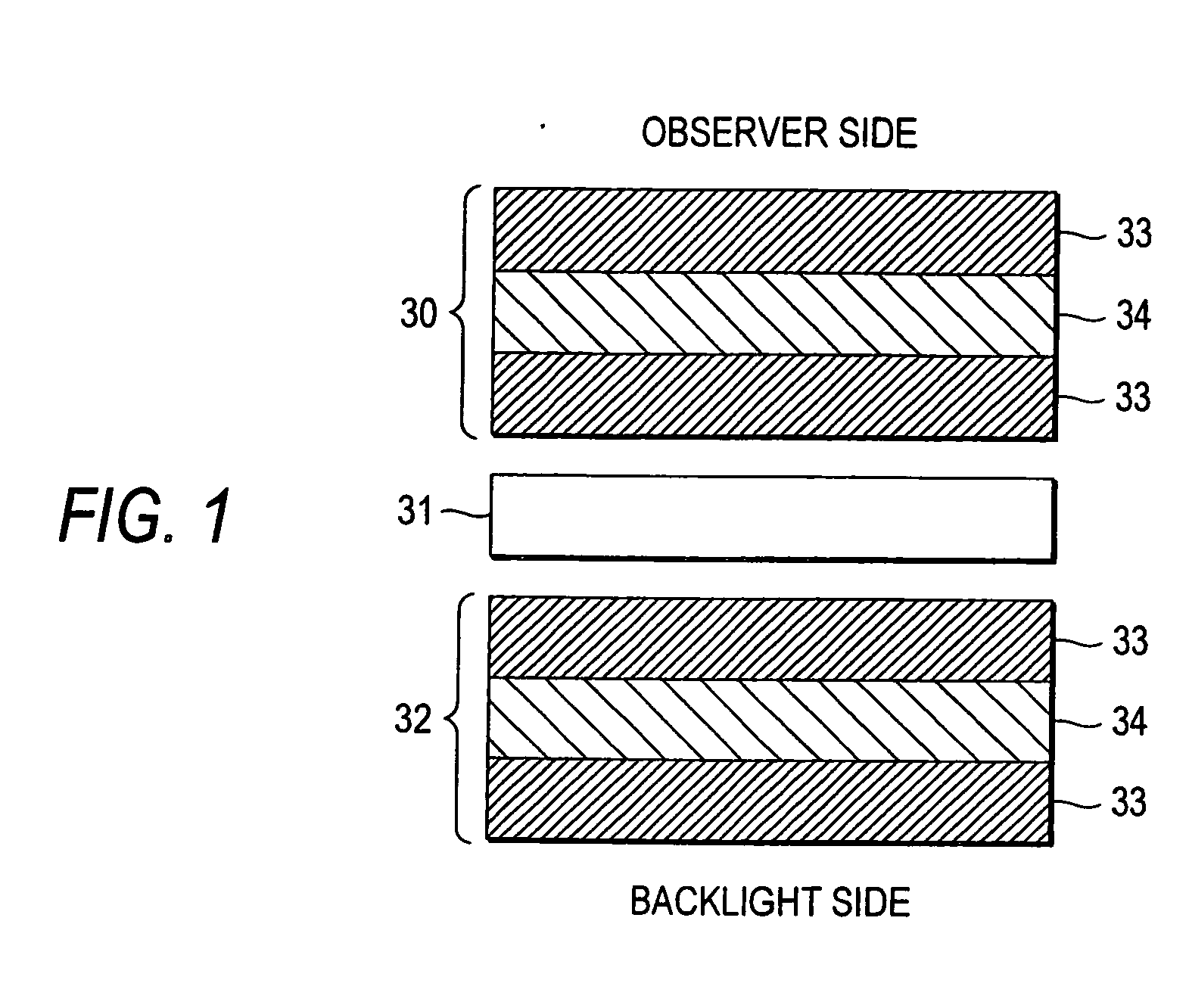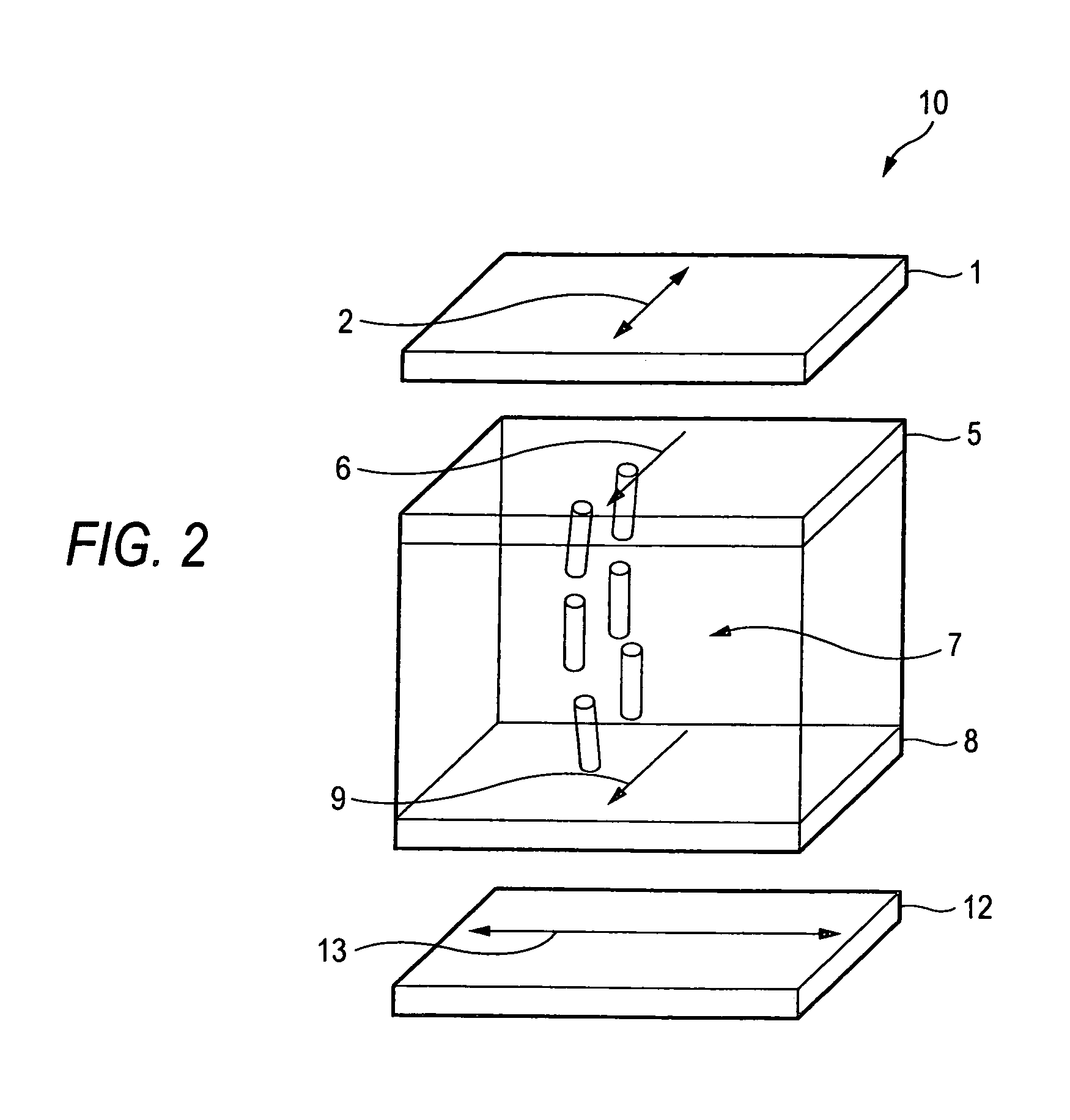Liquid Crystal Display Device
a liquid crystal display device and cellulose acylate technology, applied in the field of cellulose acylate film, can solve the problems of deterioration of the contrast of the liquid crystal display device, haze of the film, process however needs improvement, etc., and achieve excellent wavelength dispersion characteristics, low haze, and high contrast
- Summary
- Abstract
- Description
- Claims
- Application Information
AI Technical Summary
Benefits of technology
Problems solved by technology
Method used
Image
Examples
example 1
Preparation of Cellulose Acylate Film 101
[0293]A cellulose acetate solution 101 was prepared by charging the following composition in a mixing tank and dissolving the components by stirring.
(Composition of the Cellulose Acetate Solution 01)
[0294]
Cellulose acetate propionate100.0parts by mass(acetylation degree: 1.91, propynylation degree:0.80)Triphenyl phosphate (plasticizer)8.0parts by massEthyl phthalyl ethyl glycolate (plasticizer)2.0parts by massEthylene chloride (first solvent)402.0parts by massEthanol (second solvent)60.0parts by mass
[0295]A matting agent solution was prepared by charging the following composition in a dispersing machine, and dispersing and mixing the components by stirring.
(Composition of Matting Agent Solution 11)
[0296]
Silica particles having an average particle 2.0 parts by masssize of 20 nm (“AEROSIL R972”, trade name;product of Nippon Aerosil)Methylene chloride (first solvent)75.0 parts by massEthanol (second solvent)12.7 parts by massCellulose acylate so...
examples 2 to 8
Preparation of Cellulose Acylate Films 102 to 108
[0300]In a similar manner to that employed for the preparation of the cellulose acylate film 101 except that the kind of the cellulose acylate, kind / amount of the plasticizer, kind / amount of the ultraviolet absorber and stretch ratio were changed as shown in Table 1, cellulose acylate films 102 to 108 were prepared.
example 9
Preparation of Polarizing Plate 101
(Saponification Treatment of Cellulose Acylate Film)
[0307]The cellulose acylate film 101 prepared in Example 1 was dipped in a 1.3 mol / L aqueous sodium hydroxide solution at 55° C. for 2 minutes, washed in a water washing tank of room temperature, neutralized with 0.05 mol / L of sulfuric acid at 30° C., washed again in a water washing tank of room temperature, and then dried with hot air of 100° C. The surface of the cellulose acylate film 101 was saponified in the above-described manner and provided for the below-described preparation of a polarizing plate sample.
[0308]A commercially available cellulose triacetate film (“Fujitack TD80UF”, trade name; product of Fuji Photo Film) was saponified under similar conditions and provided for the below-described preparation of the polarizing plate sample.
(Preparation of Polarizer)
[0309]Iodine was adsorbed to a stretched polyvinyl alcohol film to prepare a polarizer. An optically compensatory sheet made of t...
PUM
| Property | Measurement | Unit |
|---|---|---|
| thickness | aaaaa | aaaaa |
| thickness | aaaaa | aaaaa |
| wavelength range | aaaaa | aaaaa |
Abstract
Description
Claims
Application Information
 Login to View More
Login to View More - R&D
- Intellectual Property
- Life Sciences
- Materials
- Tech Scout
- Unparalleled Data Quality
- Higher Quality Content
- 60% Fewer Hallucinations
Browse by: Latest US Patents, China's latest patents, Technical Efficacy Thesaurus, Application Domain, Technology Topic, Popular Technical Reports.
© 2025 PatSnap. All rights reserved.Legal|Privacy policy|Modern Slavery Act Transparency Statement|Sitemap|About US| Contact US: help@patsnap.com



